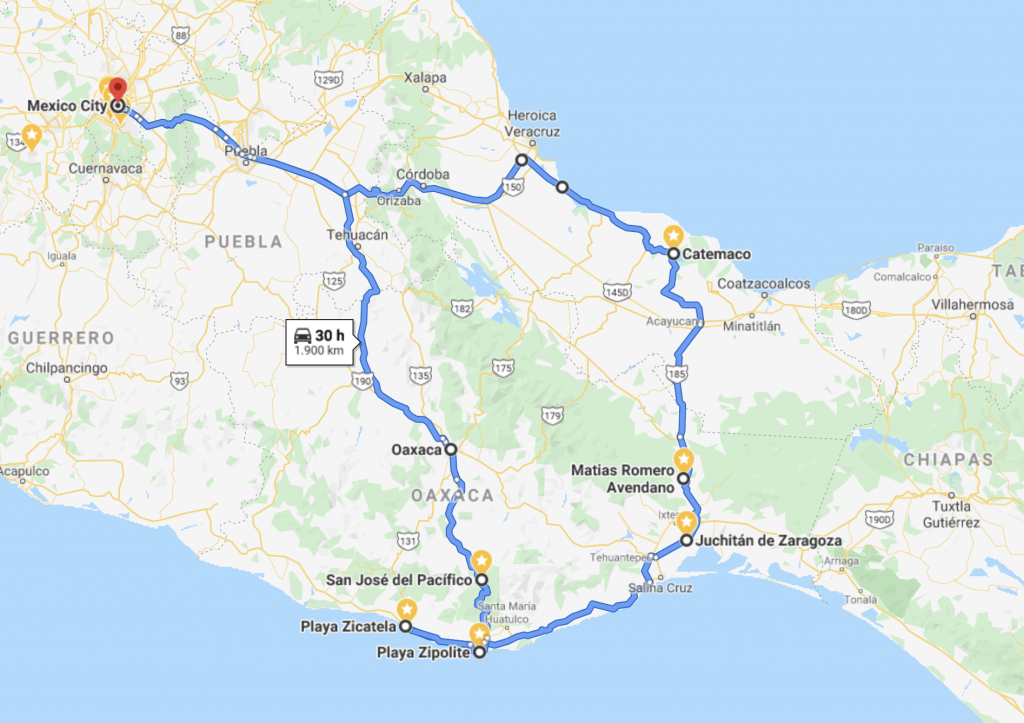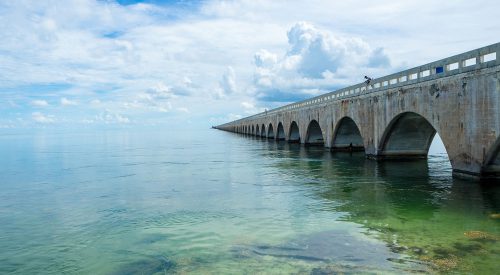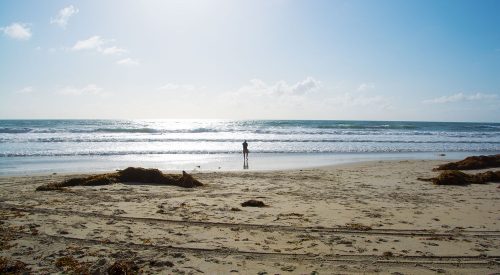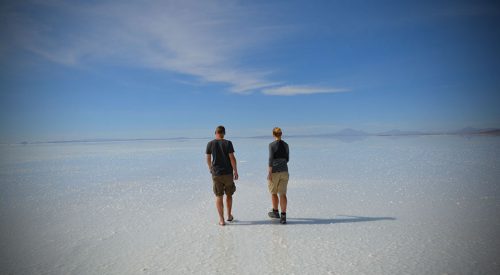Mexico’s southern heart
Follow us on a road trip to the wild south of Mexico. The cultural heart of the country beats here with a mystical rhythm of its own. In the states of Veracruz and Oaxaca we encountered an eclectic mix of magical cities, ancient traditions, wild mountain ranges, and enchanting beaches.
Just a few days after Christmas we left Mexico City in the early morning light, to avoid the city’s notorious bumper-to-bumper traffic. Our journey would take us 2,000 kilometers, during which we would cross 5 climate zones, with a total of 17,000 vertical meters of ascents and descents along the entire route. We, that is Carolina & Christian, were looking forward to spending New Year’s with Carolina’s family in Matias Romero in the eastern fringes of the state of Oaxaca before exploring further south. During this first part of our journey we were accompanied by a good friend from Berlin who spent time with us in Mexico, as well as the white family Labrador Camila, who was very old and unfortunately not very healthy. We were to take her to the family home for a health retreat.
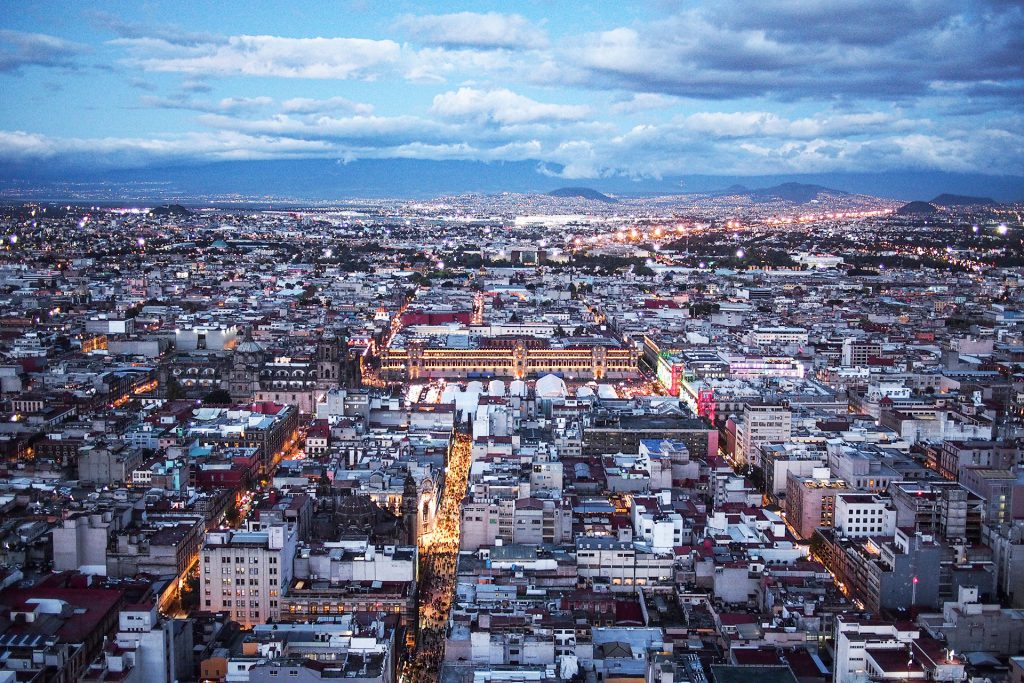
After crossing the green mountain ranges that surround the megacity, we then traversed the wide, dry central Mexican plateau, which is overshadowed by Mexico’s tallest mountains: the Popocatépetl, El Iztaccihuatl and Pico de Orizaba. These tower five and a half thousand meters above a 2,000, high desert plateau. Seeing an active volcano cough up a cloud of black smoke every once in a while, is quiet fascinating site!
Around noon we started down a beautiful descent all the way down to sea level, that took us through rugged, green overgrown mountains to the state of Veracruz. Here we were welcomed by the Mexican Gulf, with its hot tropical climate, small fishing villages and vast sugar cane fields.
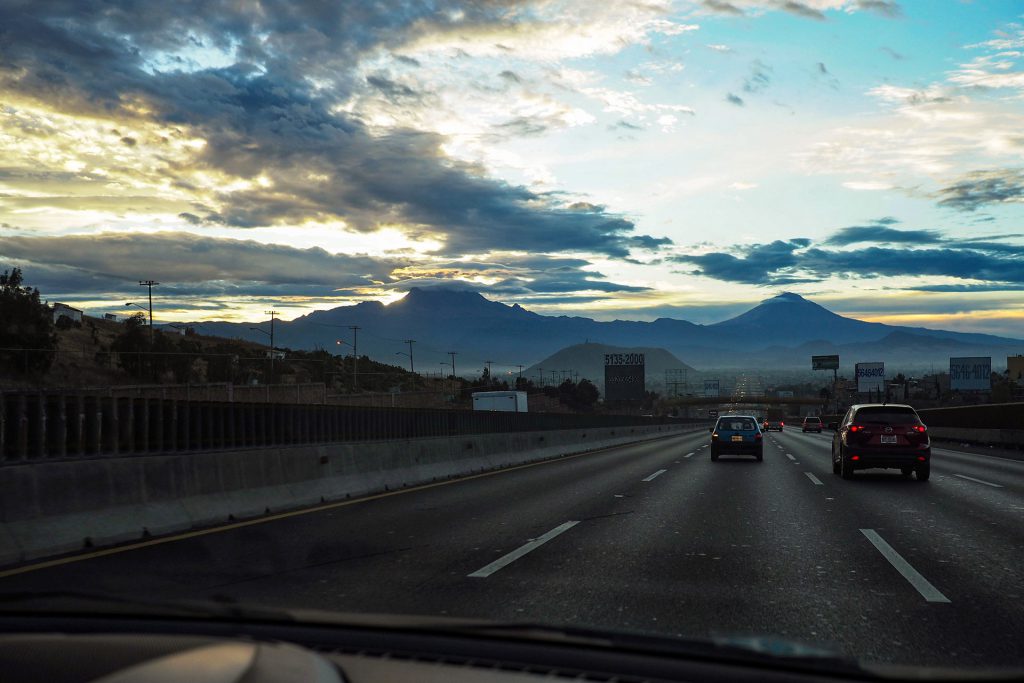
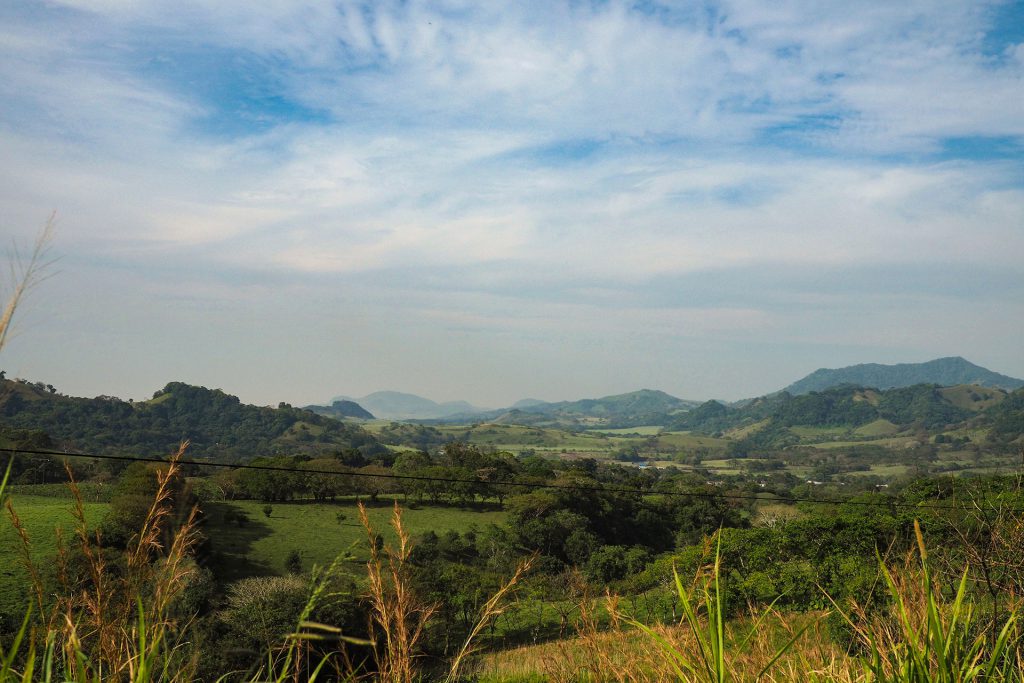
Magic Catemaco
After a few hours’ drive along a flat and grassy coast that reminded sometimes of the Netherlands, we reached an area with lush green rolling hills called „Los Tuxtlas“ that are home to famous coffee plantations. In the midst of these lies a large lake formed by volcanic eruptions and fed by occasional flooding rains. Overlooking the lake was our first destination, the small, old and picturesque town of Catemaco, known for its deep-rooted traditions of witchcraft and sorcery. Here every year in March, the Congreso Nacional de Brujos, the national congress of sorcerers, takes place with up to 5.000 participants.
The boardwalk, the main street by the lake, is filled with vendors offering boat tours to the islands in the lake that are populated by monkeys. You hear the cries of traders offering Tegogolos (freshwater snail) and Carne de Chango, which translates to monkey meat, but is actually pork, flavored with leaves. Here you can also find the occasional witch or sorcerer demonstrating their knowledge of natural medicine, fortune telling or performing spiritual rites, from a simple purification to the calling of spirits.
Further up the hill on cobbled streets, past the busy markets, lies the Basilica Virgen del Carmen, the center of the town’s religious magic. As the legend goes, in the seventeenth century, the Blessed Virgin Mary – the Virgin of Carmen –, appeared to a fisherman near a cave by the lake. Her footprint was found in a basalt rock in front of the cave, and inside was a statue of her, which is now an important relic exhibited in the church. Outside the basilica, elderly women offer small bouquets of basil and flowers. Believers take them to the statue in the basilica for a cleansing ritual: Touching the statute with the flowers and then rubbing them over their bodies is said to banish bad energies forever!
After sunset, the streets came alive with people and music. We witnessed a parade of musicians, wearing animal masks, playing and dancing for a while at each intersection before moving on to the next.
In Catemaco we spent the night at Casa Rosa, a charming guest house located near the center of the city, run by Katharina, who was born and raised in East Germany. Katharina has had an eventful life full of different passions, from a sports career, to studying church music, running a photo studio and working as a management consultant, before she settled in Catemaco in 2008. Next to the guesthouse, she runs a café where she roasts coffee from her own plantation in the surrounding mountains.
Camila, the family dog, must have been affected by the magical vibes of this town. After being lethargic for days, she was back to her old self, running and jumping around energetically in the warm evening, just like a young dog.
The next day, we set out through the rolling hills covered with tropical forest, leaving behind the state of Veracruz, to drive south into Oaxaca, along the old trading route that has been used since the 16th century by the likes of Hernán Cortés and Alexander von Humboldt.
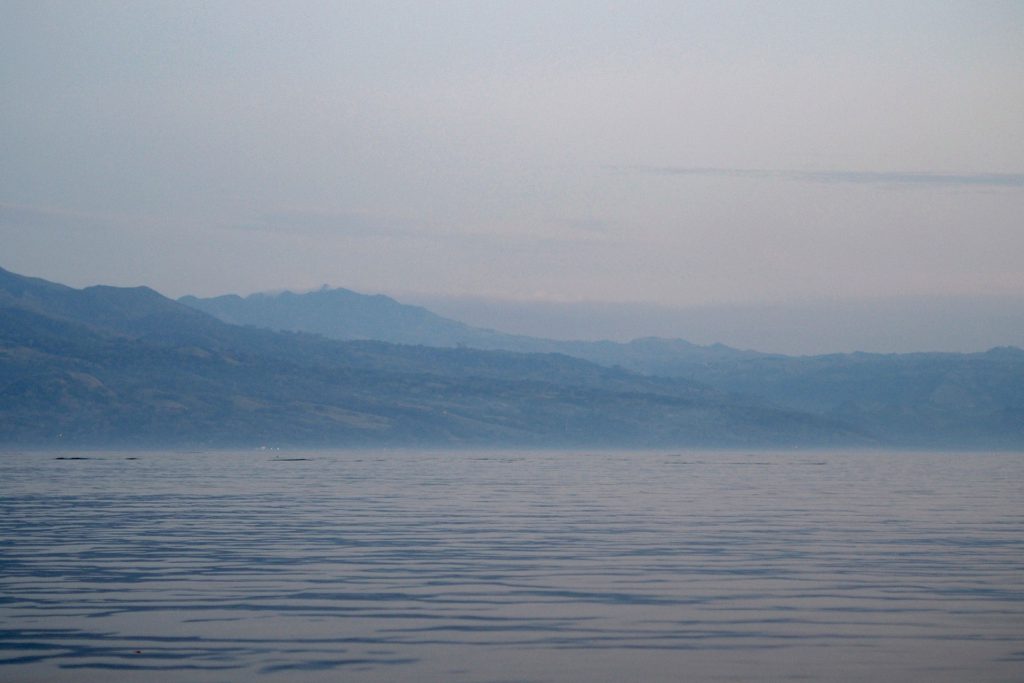
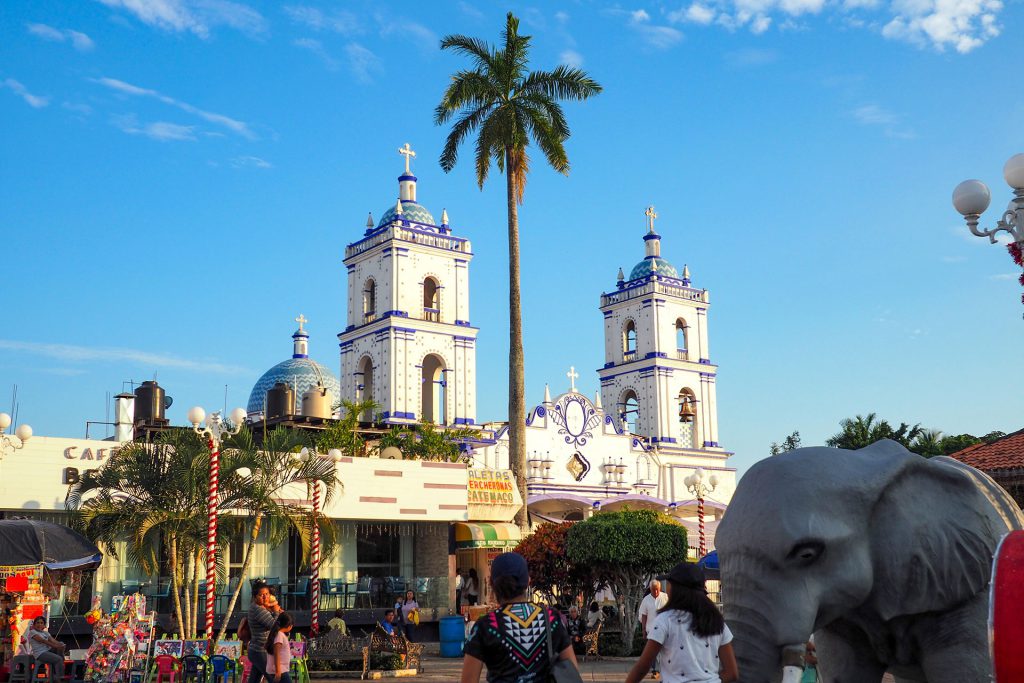

Old Istmo
The old Tehuantepec route connects the ports of Coatzacoalcos on the Gulf coast with Salina Cruz on the Pacific side. This is the shortest connection between the Gulf of Mexico and the Pacific Ocean. Being an important route prior to the opening of the Panama Canal, a train line was built 1888 to bridge the 220km between the two coasts, which is now abandoned. This narrow piece of land (an Isthmus, Istmo in Spanish) also marks the geographic division between North and Central America. Tying in with its former importance, there are plans to revive this connection, the Tren Transísmico, which will connect Istmo with the city of Veracruz and further on to the Yucatan peninsula.
The Istmo de Tehuantepec is one of the regions with the greatest indigenous presence in the country. Here the Huaves, Zoques and Zapotecas live. It is a country of old tradition, sunny people and open minds. It is known for the „Tehuanas“, the women of Tehuantepec with their assertive personalities, who run a matriarchal society, and wear brightly colorful dresses with floral ornaments which Frida Kahlo made known to the world.
Our first stop in the Istmo region was Matías Romero de Avendaño, about halfway between the oceans. Matías Romero is the home to Carolina’s family. Here we were to spend New Years with the family, and say farewell to our friend from Berlin, who was planning to travel further from here on her own. Matías Romero was also the final destination for Camila, it was planned she spends her health retreat here. Which seemed to be necessary, as on the drive to Matías, we had to pause a few times to give her water, as she was breathing very heavily again.
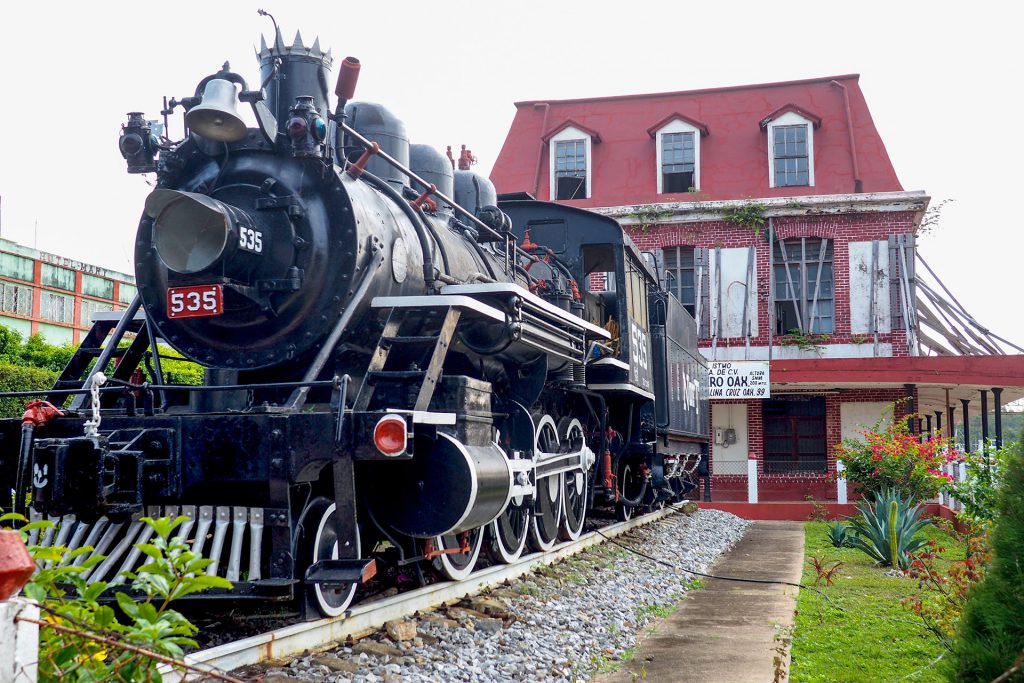
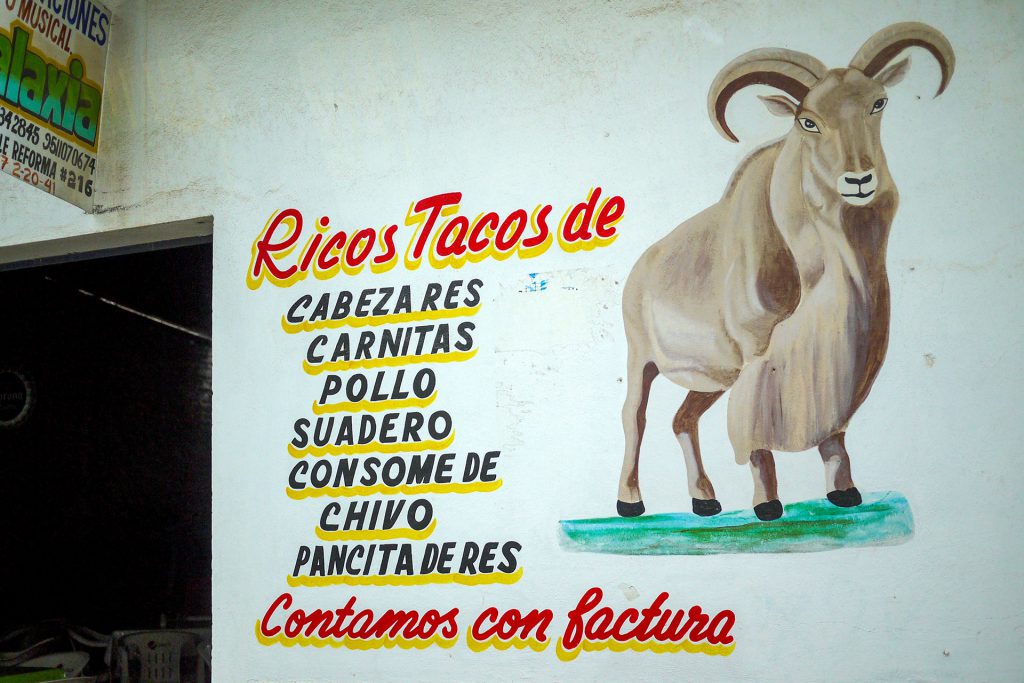
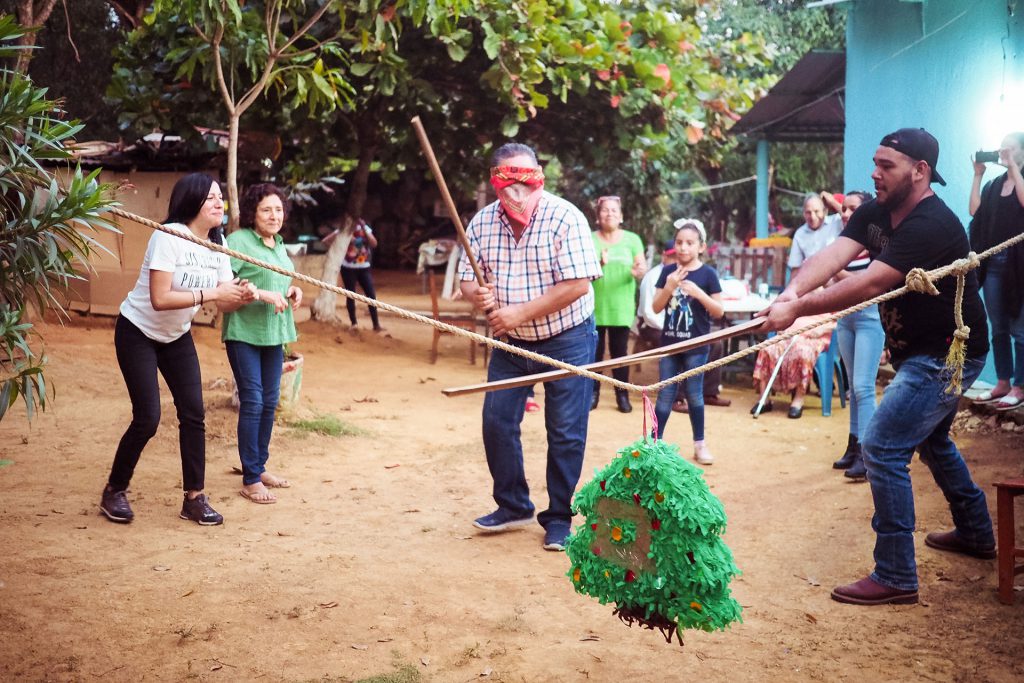
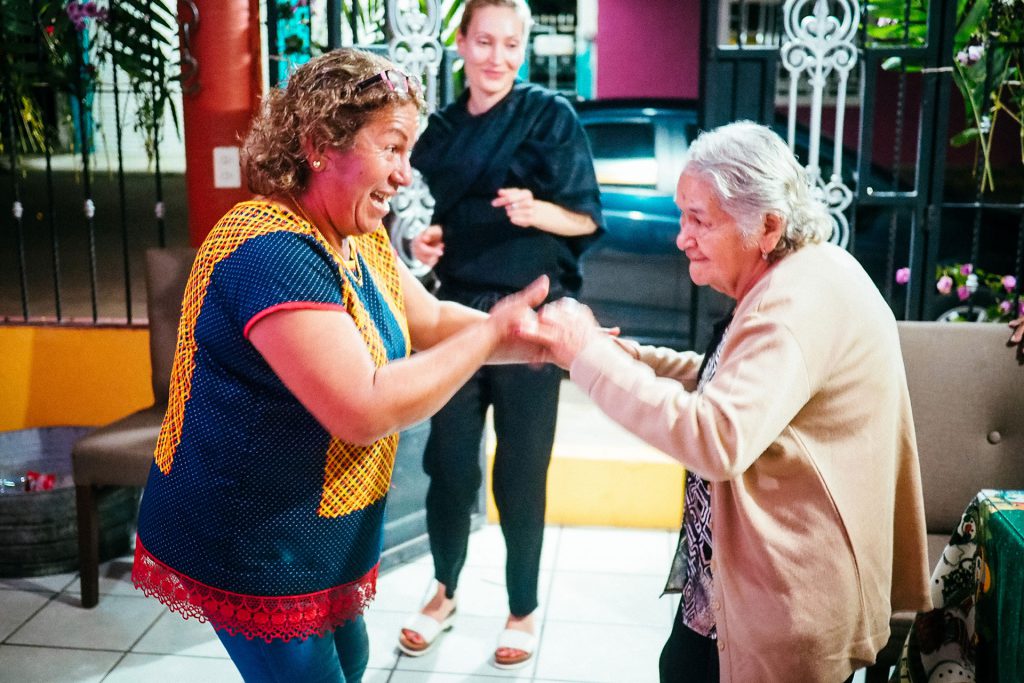
The regional market town of about 30.000 people still has many old buildings from the early years of railroad constructions, as it was an intermediate point between both ports. The town is alive with laughter and customs that mix old Zapotecan with Christian and more recent traditions. For example, each year on December 31st, groups of young people roam the streets, from house to house, playing music and dancing wildly. The female dancers are dressed as old men, while the men are dressed as women with the regional clothing of Tehuana. These customs bid farewell to the year that was. This crazy parade was our entertainment highlight of the day, turning the streets of Matías Romero into one large open-air parade.
While Christmas is not a large celebration in Mexico, New Years is the big family event. Parents and children, uncles and aunts, cousins of first, second and third degree gather to share the last dinner of the year, which consists of typical dishes of the region, such as chicken in red chocolate sauce, cold soup and the traditional Zapoteca potatoes with corn and olives. It is a lively party with lots of hugging, Mezcales, and cheering. The next day we welcomed in the New Year with a Piñata at another large family gathering. And, very sadly, we had an unexpected funeral for a furry friend.
During our days in Matías Romero we spent many hours at Nanche Café. It serves the best coffee in town, provides a relaxed atmosphere, and acts as the town’s unofficial meeting spot. Here we met more family members (in fact we met distant family members on almost every corner). Run by a well travelled Mexican woman, the café not only sells regional products, but also provides employment to young local vulnerable women.
Juchitán de Zaragoza, the „Place of white flowers“, was our second stop in Istmo further south along the old railroad. It is a colonial town with native people and a sparkling atmosphere, which is famous for its foods, songs and festivals, and it is the center of the Muxes, Mexico’s third gender. Muxes are born as men but identify as female, taking on female roles in society. They often work as weavers, embroiderers, producers of adornments and as women’s stylists. They are iconic for the region and have been accepted for what they are for centuries.
In the center of town lies the old market square, with a large tree right in the middle. The streets and markets around it are dazzling with a kaleidoscope of colors and flavors. We saw beautiful brown-skinned women, dressed in long skirts and Huipiles, the colorfully embroidered blouses with floral ornaments, with their hair braided with brightly-colored ribbons or wearing flowers in their hair, talking loudly in Zapotec, smiling, always smiling. Wrinkled elderly women sell the traditional foods of the area, Tlayudas, large tortillas filled with beans, cheese and salsas like a grilled Calzone, or Tamales, small in banana leaf wrapped packages with steamed corn mash, or Pozol and Bupu, Pre-Columbian drinks with corn or cocoa. In the indoor part of the market the stalls overflow with handcrafted traditional goods like golden earrings, jade bracelets, leather sandals, or the typical Huipiles.
The liveliness and joy of the people contrasts starkly with the condition of the town: A strong earthquake in 2017 caused many historic buildings to collapse, the Municipal Palace, the Parish of San Vicente Ferrer, and even the ancient market hall.
After a beautiful evening at Parque Charis, where millions of mockingbirds make a deafening noise in the trees, we said goodbye to this place where life seems to bloom so richly, and continued our journey southwest towards the beautiful Pacific coast of Oaxaca.
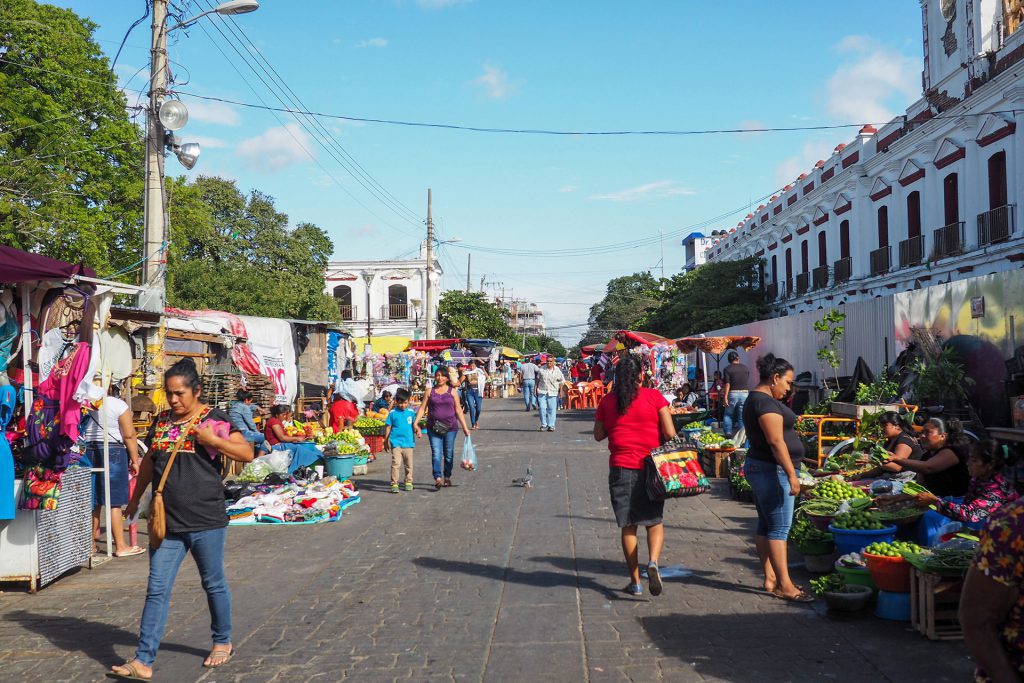
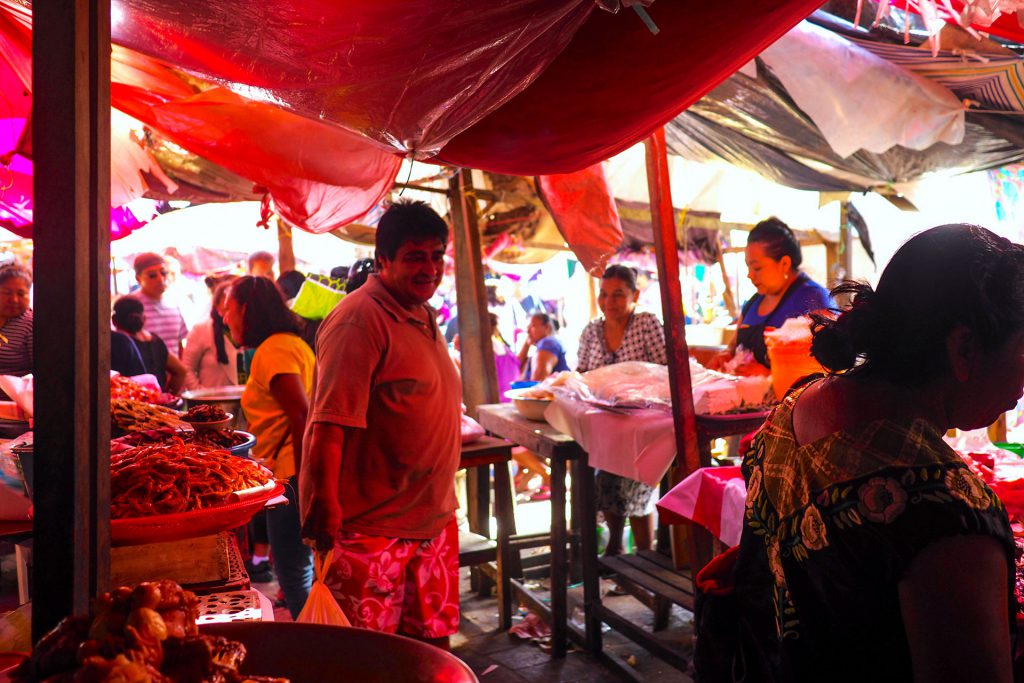
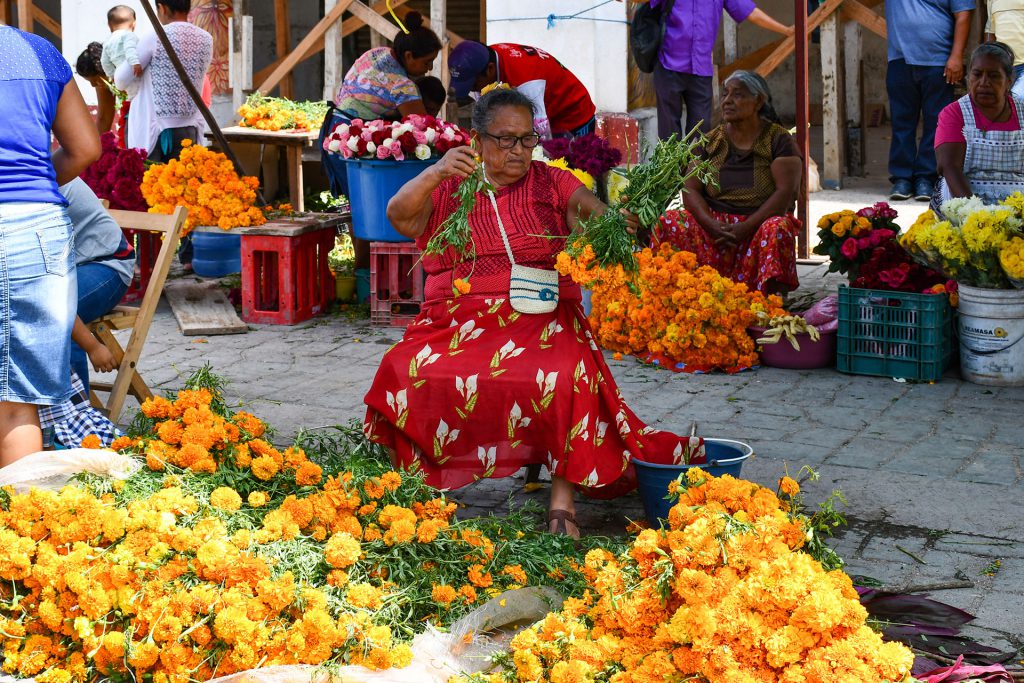
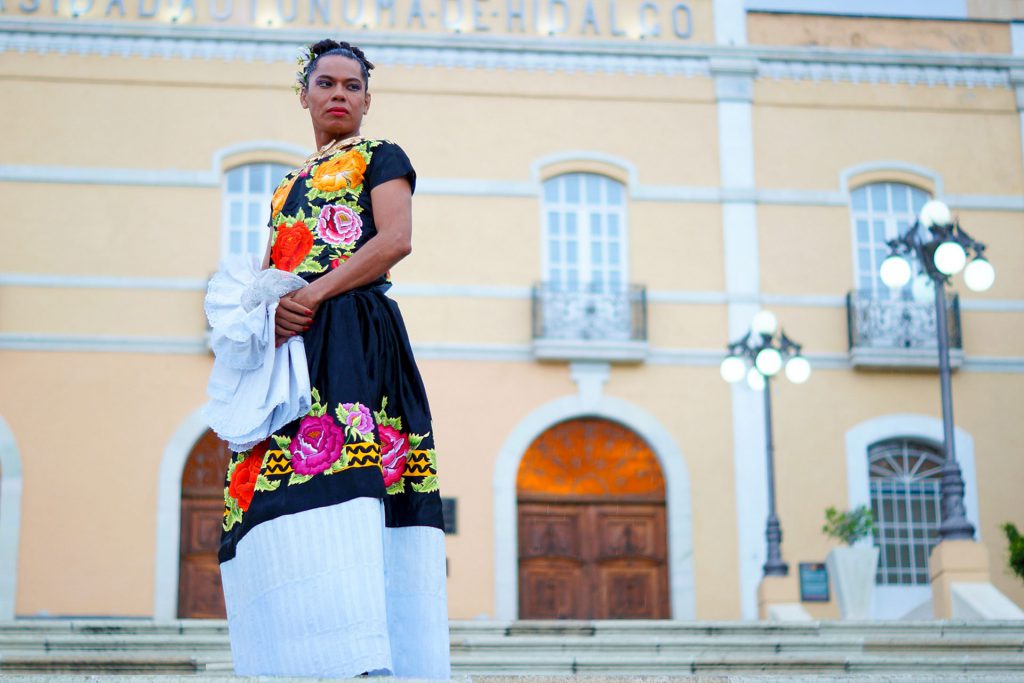
Beautiful Beaches
Our drive took us through the plain, past Tehuantepec, the center of the Zapotec culture, and finally reached the coast with its road that runs up and down through countless tight curves between the three thousand-meter peaks of the Sierra Madre del Sur and the Pacific Ocean. As we approached the coast, the sky became bluer, the sun hotter and the climate, which nourishes the green jungle of the area, more humid.
This 300km stretch of coast referred to as the “Oaxaca Riviera“, runs between the port of Salina Cruz in the east and Puerto Escondido in the west, is a natural paradise. From December to April whales migrate along the coast, and it is home to pelicans, dolphins and sea turtles that lay their eggs on the beach, from which thousands of tiny turtles hatch and crawl into the sea.
Here we found a whole range of wonderful beaches, perfect for chilling and disconnecting from the world: from the beautiful nine bays around UNESCO Biosphere reserve Huatulco populated by wealthy local tourists, to the hippie and drop-out beaches of Mazunte and Zipolite, and finally, to the surfer’s paradise around Puerto Escondido. The seafood is amazing, and the people are laid-back.
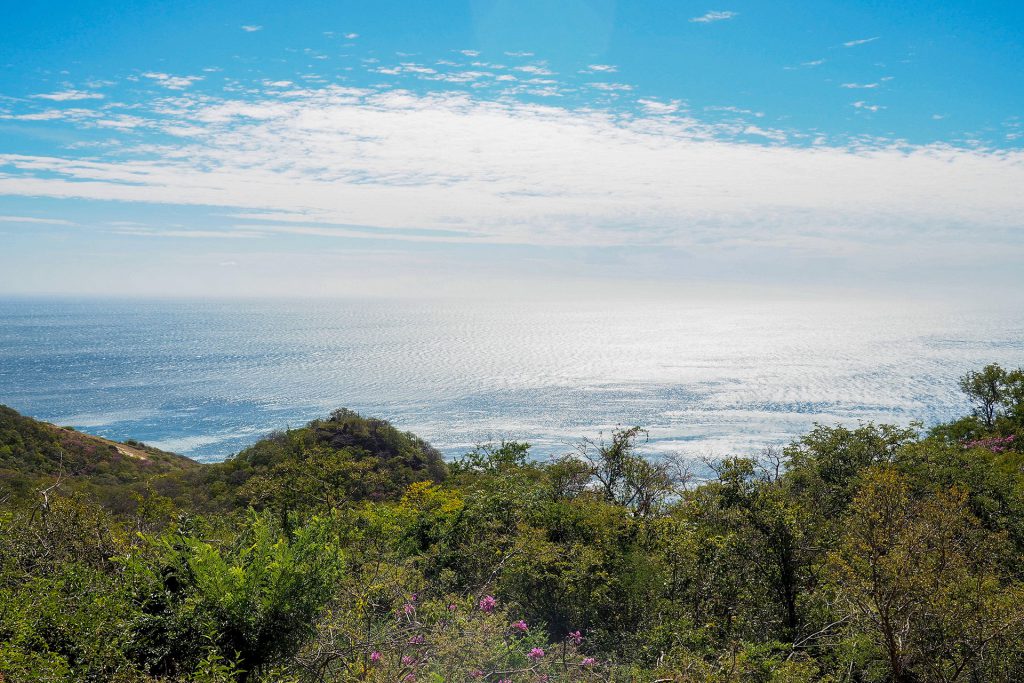
Zicatela is the bohemian beach near Puerto Escondido, full of young backpackers and surfers. It became popular among surfers from California because of its waves that sometimes tower up to 10 meters, which earned it the name „The Mexican Pipeline“. Two world tournaments are held here, the Zicatela Pro and Quiksilver Pro, which attract legendary surfers from all over the world.
Punta Zicatela is filled with free-spirited young backpackers from around the globe. Early morning surfers set out with their boards to conquer the waves. In the afternoon people enjoy the ocean, practice yoga, jog or just hang out with a drink. In the late afternoon everyone comes out to enjoy the sublime sunsets. In the evening life moves to the streets full of restaurants, bars and coffee shops.
We stayed in the charming guesthouse “Olas de Estrellas”, which is run by a retired couple from Mexico City who are open, liberal, and intellectual. Their house is beautifully designed and artistically decorated by Marcos, the husband, who has a great eye for details and builds most of the things himself. They are not only wonderful hosts but are also always open for an interesting conversation.
Zipolite, near the municipal town of Potchutla, is named from zapotecan beach of the dead. As the legend goes the Zapotecs brought their deceased here to rest in the beautiful bay. The beach stretches between two high cliffs and is shaped like a half moon. Its sand is golden, and the sea is crystal clear with shades of green and blue.
The village itself is rather small and displays a unique laid-back atmosphere. It is home of old hippies, expats and local fishermen, and draws a mix between middle-class Mexicans travelers, yoga hipsters and free spirits. Zipolite is the only place in Mexico that allows nudism, which adds to its fame. Everyone walks barefoot, most don’t bother to wear more than a bathing suit all day or night. Because of the deadly currents, swimming is prohibited, only the local daredevils ride the waves. This might be the reason why people stay in their hammocks all day to read or watch the waves from the shade. Night life takes place in bars right on the beach, which also serves as the main street.
In Zipolite you can stay in simple hotels, cabins, or tents, or just rent a hammock. We decided to book us in to Posada Brisa Marina, lolocated right at the beach. The boarding house is run by a dark-tanned American who is always up for a good story and provides his guests a relaxed atmosphere. The rooms are simple but offer all the essentials western travelers need. We stayed in a room with a sea view balcony and fell asleep every night to the wonderful sound of crashing waves.
After spending more days than planned in this little other-worldly paradise, we packed the car and drove back north, across the high-altitude mountain range that breaks the clouds coming from the Pacific on their way to the central dessert plains.
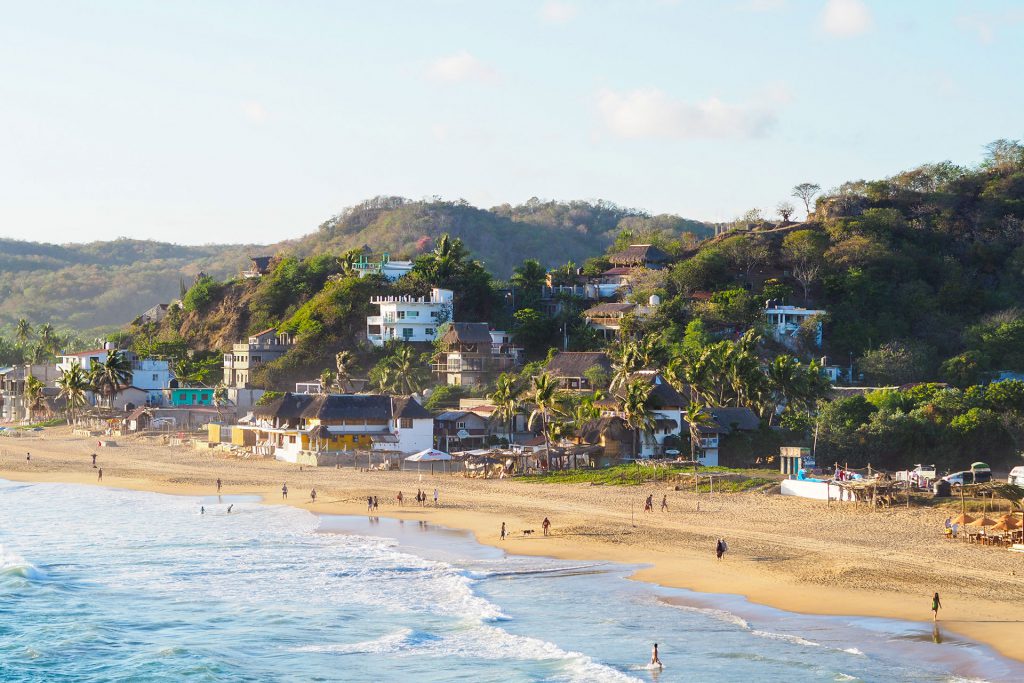
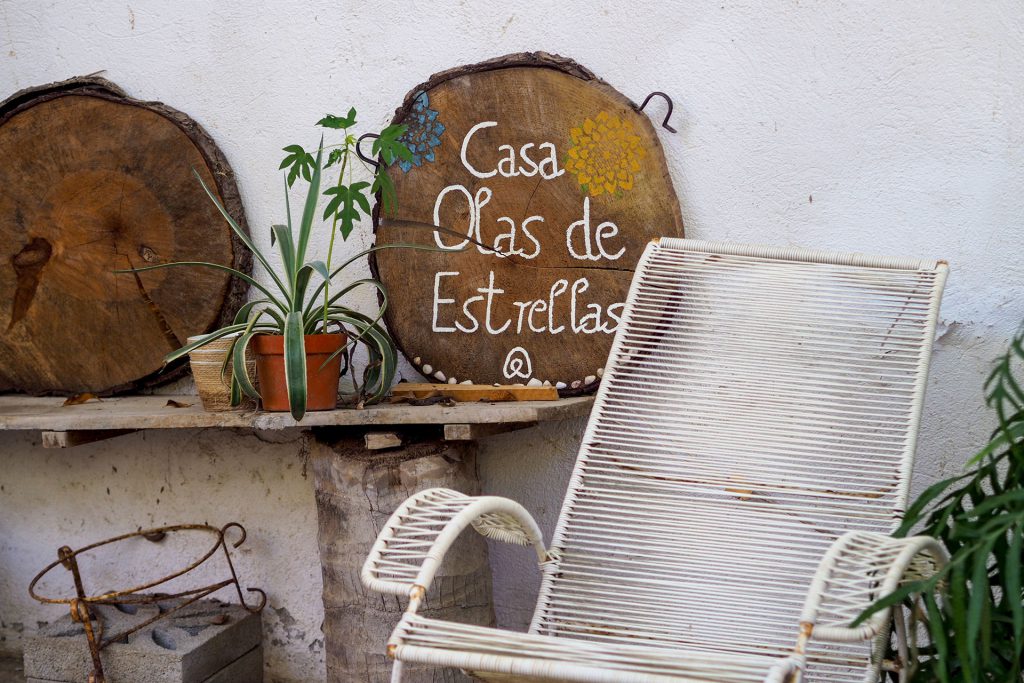
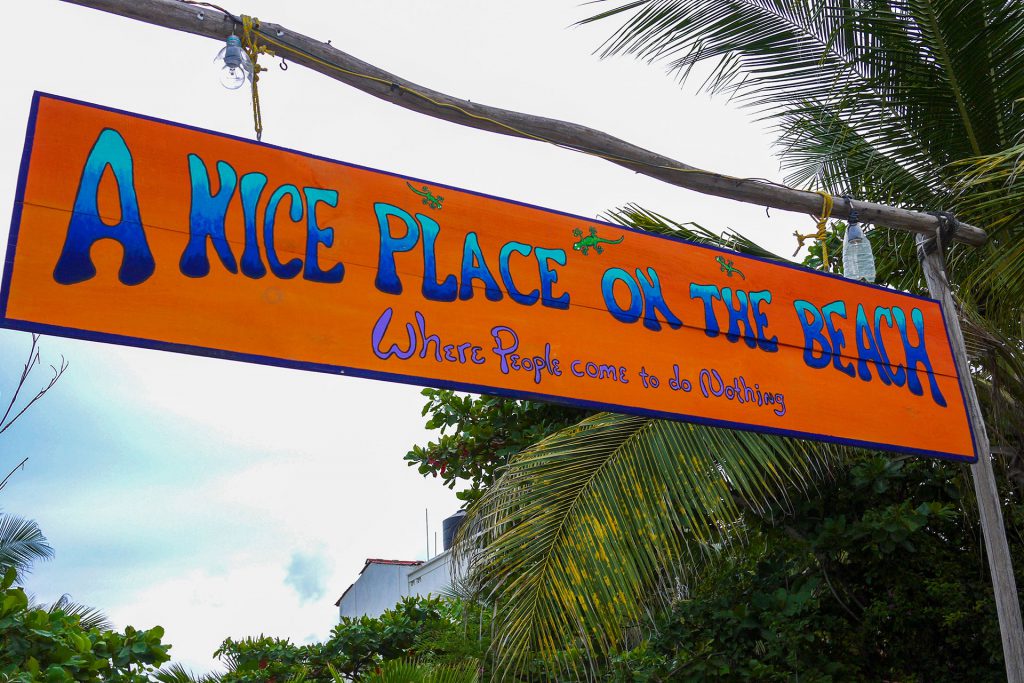
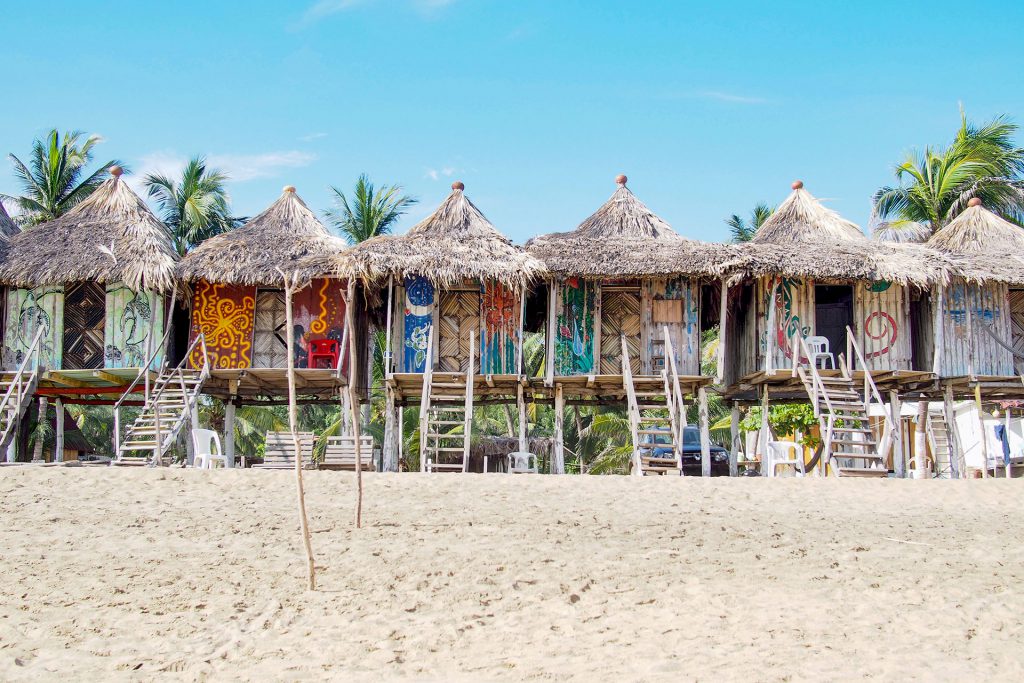
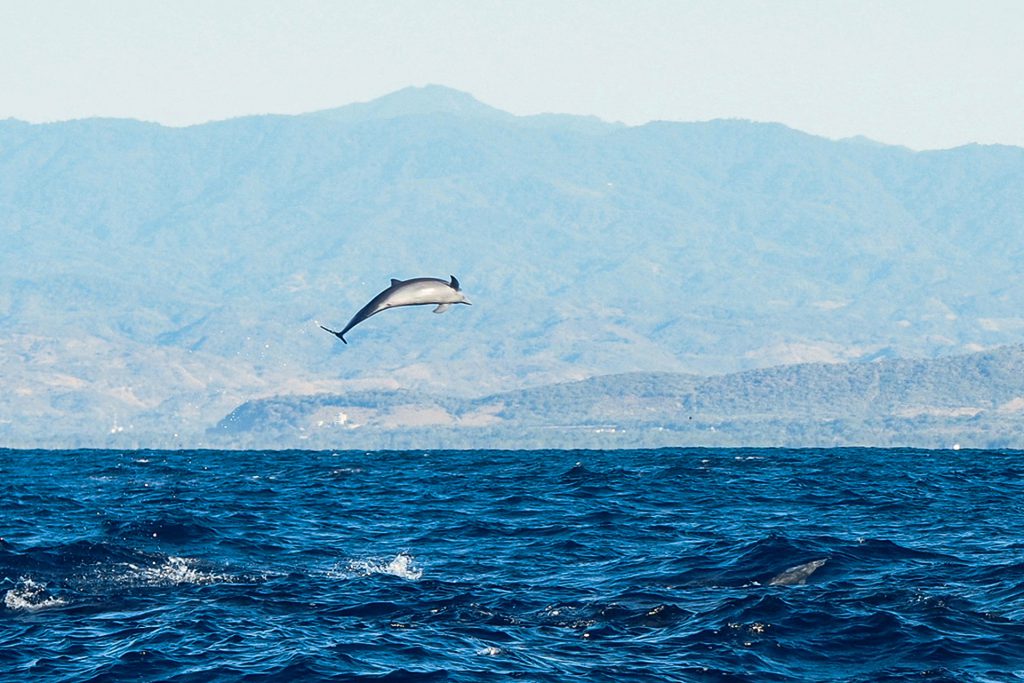
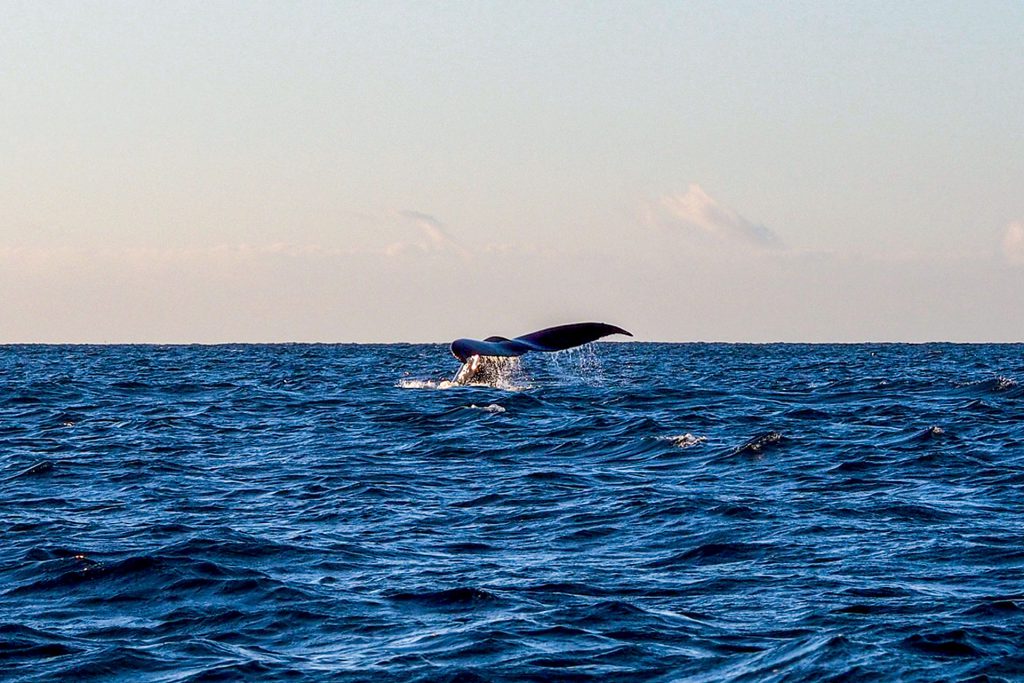
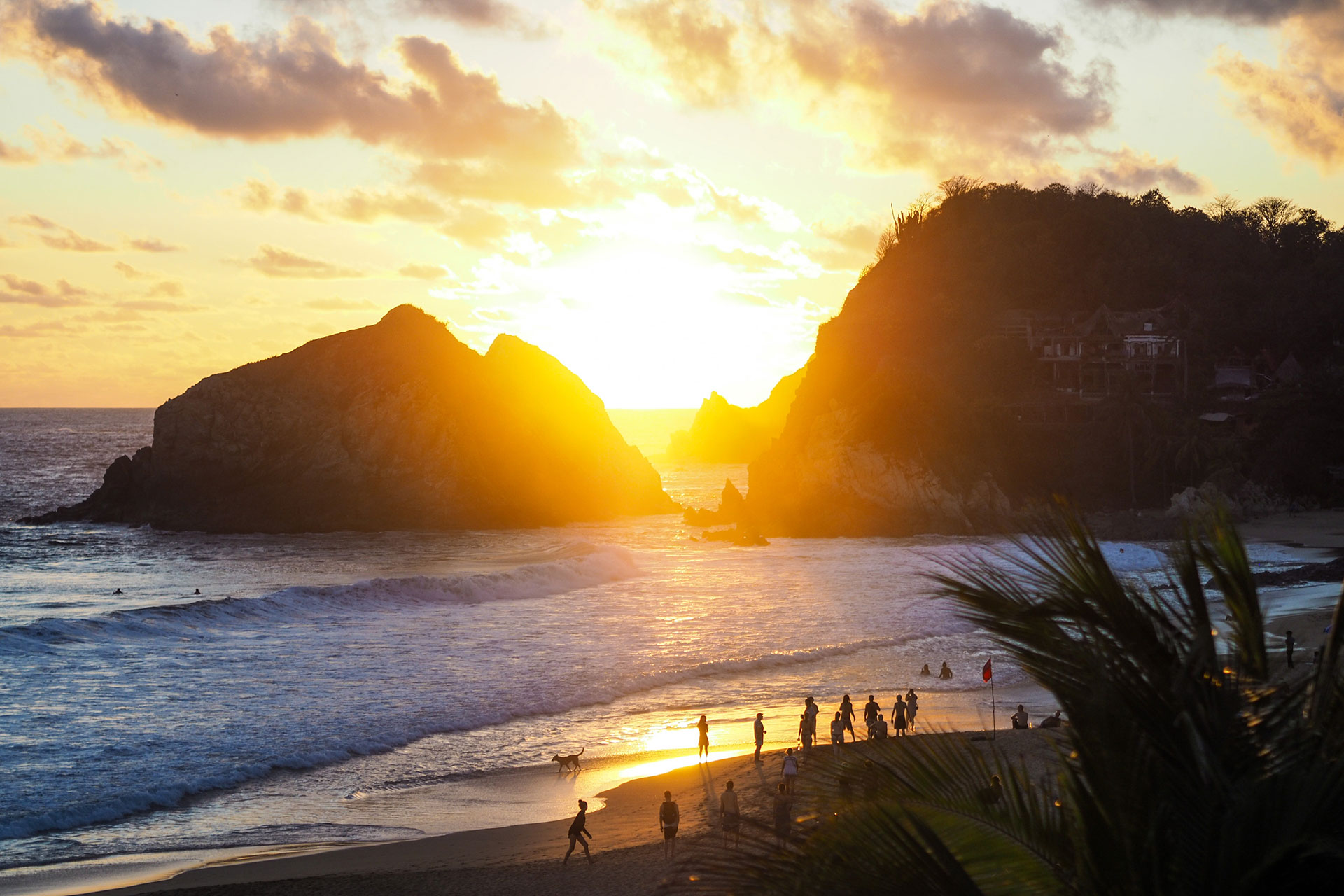
Mystic Mountains
We were told that everyone driving on this road gets motion sick, and we can assure you this is absolutely true. Within a 3-hour ride, we climbed 2.500m, and took about a million tight curves on the way. But without a doubt, this is one of the most beautiful roads in the world. It led us up the Sierra Madre del Sur and took us on a journey from the hot and humid jungle with big leafed plants to the fresh mountain air with an ancient forest of pine-oak trees. The sun was shining as we drove through the lush green and the occasional sleepy village where road-side vendors were offering local honey.
The higher we climbed, the more spectacular the views became. After the many sickening curves, we finally reached our destination: San José del Pacífico, half way between the coast and the city of Oaxaca, that gives the state its name. The village lies just below the mountain pass, offers an unparalleled peace and tranquility and a 180-degree view of the Sierra. It feels like you can almost see the Pacific Ocean in the distance.
The climate up here is simply magic. From clear and sunny it can change in an instant to foggy with a view less than 30m, and after a short rainfall the hot sun comes back out again. This is when the view gets even more dramatic: shreds of clouds hang in the mountain ridges, water drips from the pines, feeding the Tillandsias, the airplants that live on many of the trees.
San Jose del Pacífico is as mystic as the dark forests that surround it. It has less than 800 inhabitants and is known for its “medicine from mother earth“, hallucinogenic mushrooms that grow here during the rainy season from June to September. These are used by the locals for self-exploration, revelation and healing. They are often combined with another ancestral ritual – the “Temazcal“, which has been practiced in Mexico for thousands of years. It is a steam bath that takes place in a small construction similar to an igloo or an ancient bread-making oven that houses 4 to 6 people and represents the mother’s womb. Inside, water, enriched by medicinal plant infusions, is poured over red-hot stones. During the ceremony a shaman sings and beats the drum. The aim is purification and relaxation through steam and songs. It is a highly pleasant experience, a comforting and positive medicinal ritual for body, mind and soul.
After a day with your head in the clouds, enjoying the refreshing cold and with walks through the dark mystic forest filled with the most exotic plants, we set out to cross the mountain pass and drive down to Mexico’s cultural capital: The city of Oaxaca.
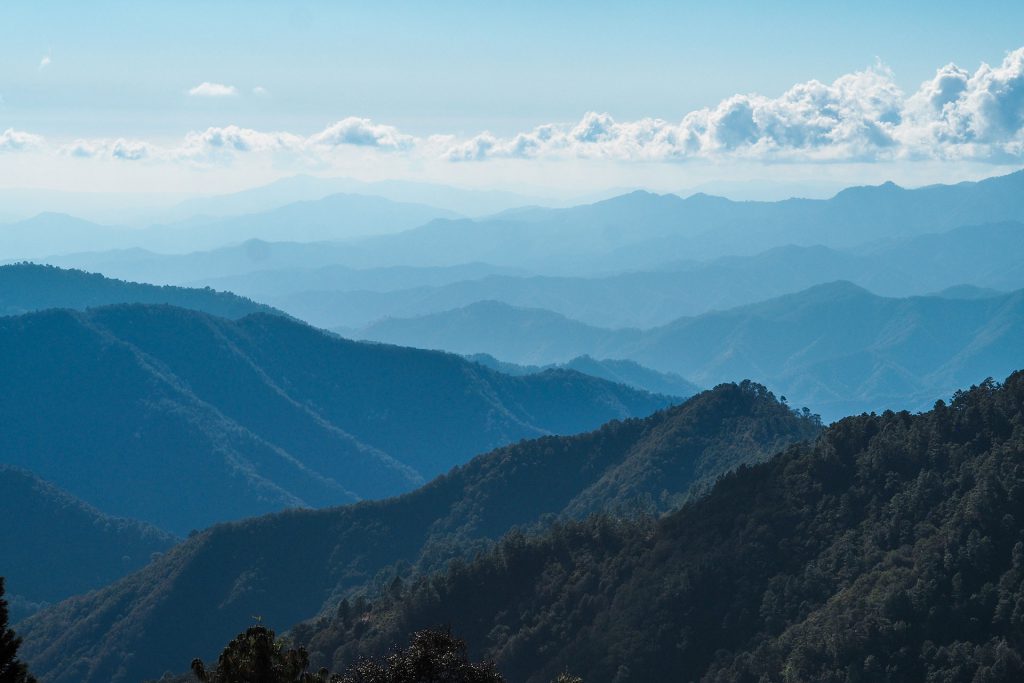
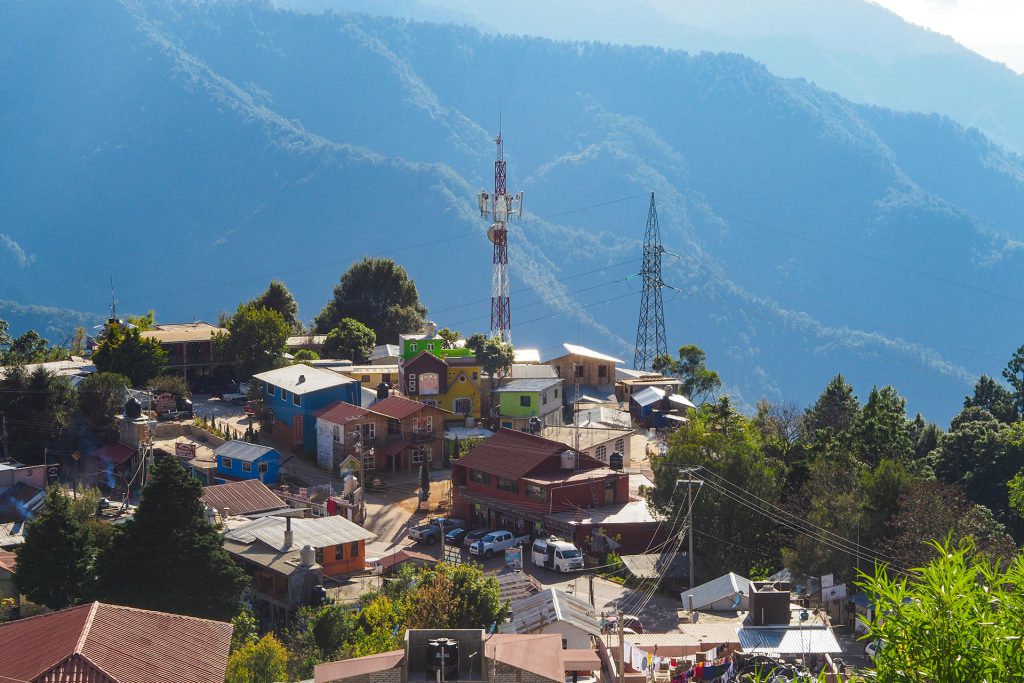
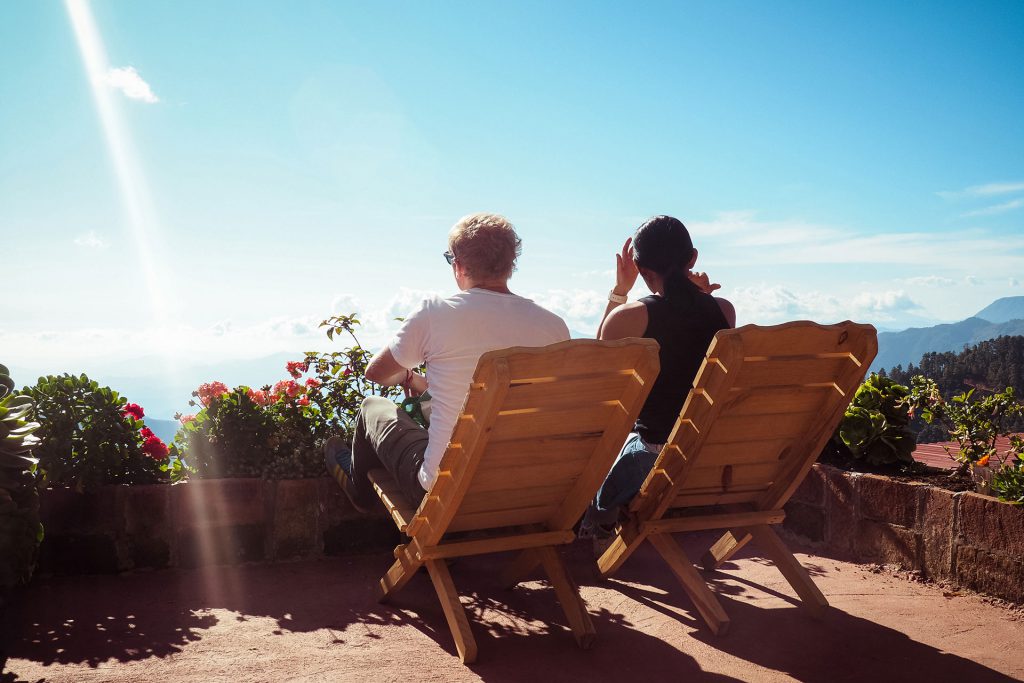
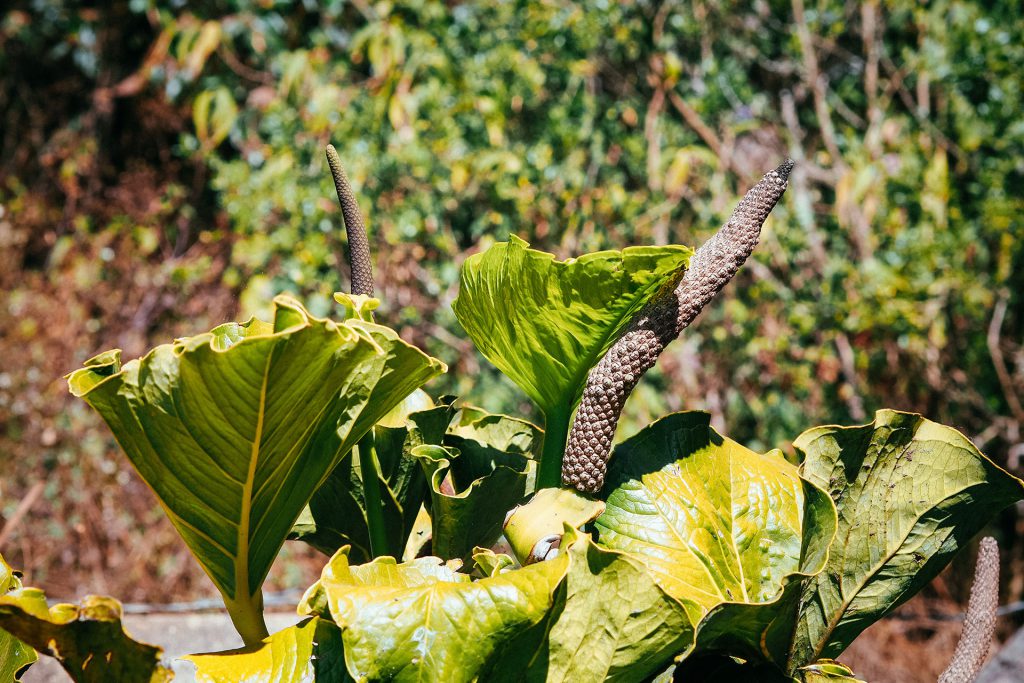
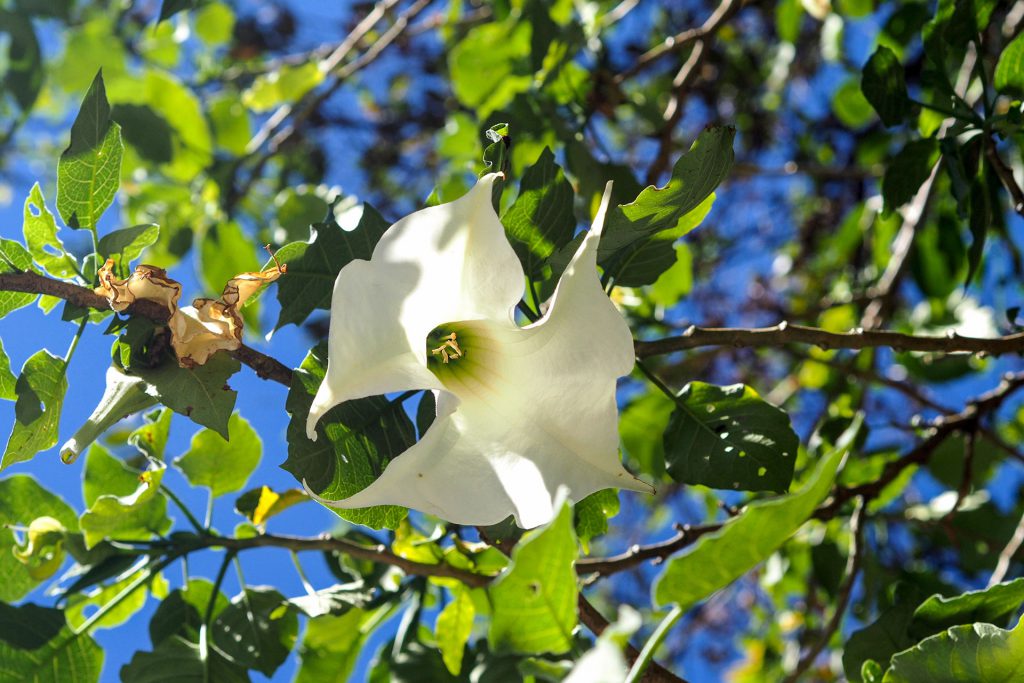
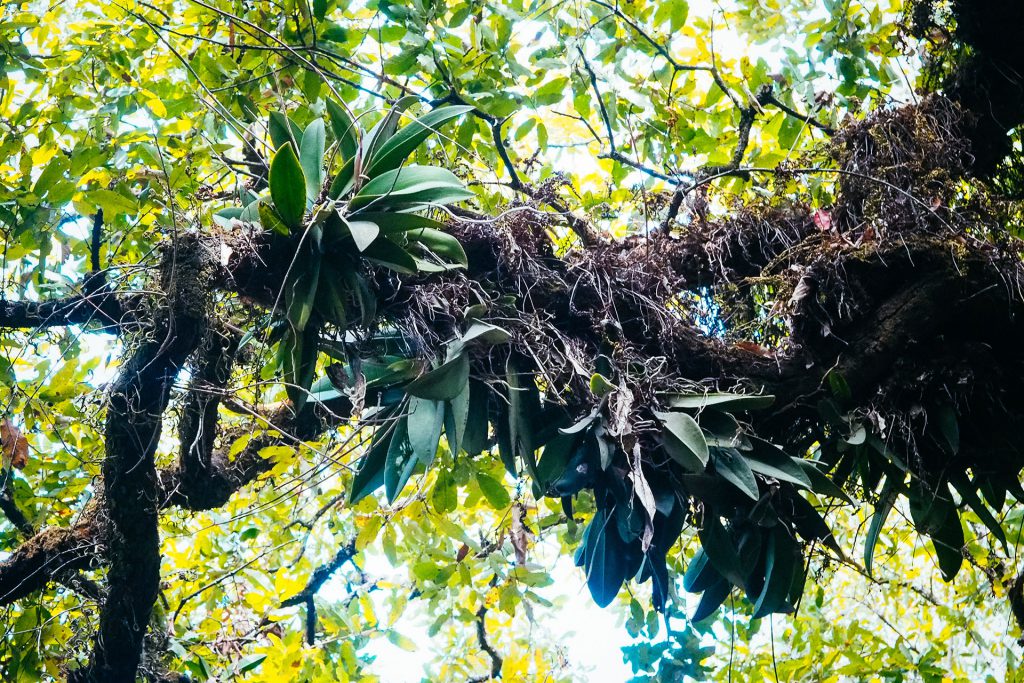
Noble Oaxaca
Oaxaca de Juárez, the capital which gave the state its name, is located in the Valles Centrales, a dry basin enclosed by mountain ranges. Being a Zapotec and Mixtec settlements for thousands of years, the Spanish came here 1521 to build a city. Its ancient history, both native and Spanish, earned it a UNESCO world heritage status.
Oaxaca is considered the cultural heart of Mexico. Here you can find all the vibrant colors Mexico is known for, and foods like Mole, the typical chocolate sauce with its myriad spices, or Chapulines, roasted locusts. The historic center offers a great deal of colonial architecture in the form of churches, plazas and mansions, often made of green volcanic stone. The Plaza de la Constitución or the Zócalo is the charming main square, dotted with trees and benches, and surrounded by restaurants. The picturesque pavilion in the center serves as a stage for the many festivities, while on the lower level are many shops, as well as public restrooms. All in all the square offers a people friendly architecture that many modern town centers are lacking.
A few blocks from the Zócalo lies the most famous church in Oaxaca, the Church of Santo Domingo de Guzmán, which was commenced in 1555. It is one of the most outstanding examples of the New Spanish Baroque, with spectacular details and tons of gold. Next to it is the old convent, that today houses a wonderful botanical garden which displays all the wonderful cacti and succulents that grow in the south of Mexico – set beautifully against a backdrop of the mountain ranges that surround Oaxaca City.
After touring the historic center of Oaxaca, we decided to go for lunch at the Mercado 20 de Noviembre, also known as the Mercado de las Carnes, the meat market. The building is filled with smoke and buzzing with locals. It is a mix of food stalls and public barbecue: first you choose your meat, then wait over a Pacifico beer for it to be slowly roasted over coals, and finally enjoy it on the high tables with tortillas, vegetables and sauces. It’s quite a culinary and cultural experience!
The city seems to be an endless market. Close to 20 de Noviembre is Mercado Benito Juarez where you can find all the typical products of the region: locusts, cheese, mole, chocolate and of course mezcal.
On our last day, we decided to visit Santa María del Tule, a small town near Oaxaca City where the famous El Árbol del Tule (Tree of Tule) is located. It is a huge Ahuehuete tree or Montezuma cypress, a type of tree that was already cultivated by the Aztecs and which today is the Mexican national tree. The Tree of Tule is estimated to be between 1,200 and 3,000 years old, and its trunk is said to be the largest in the world, measuring 42 meters in circumference.
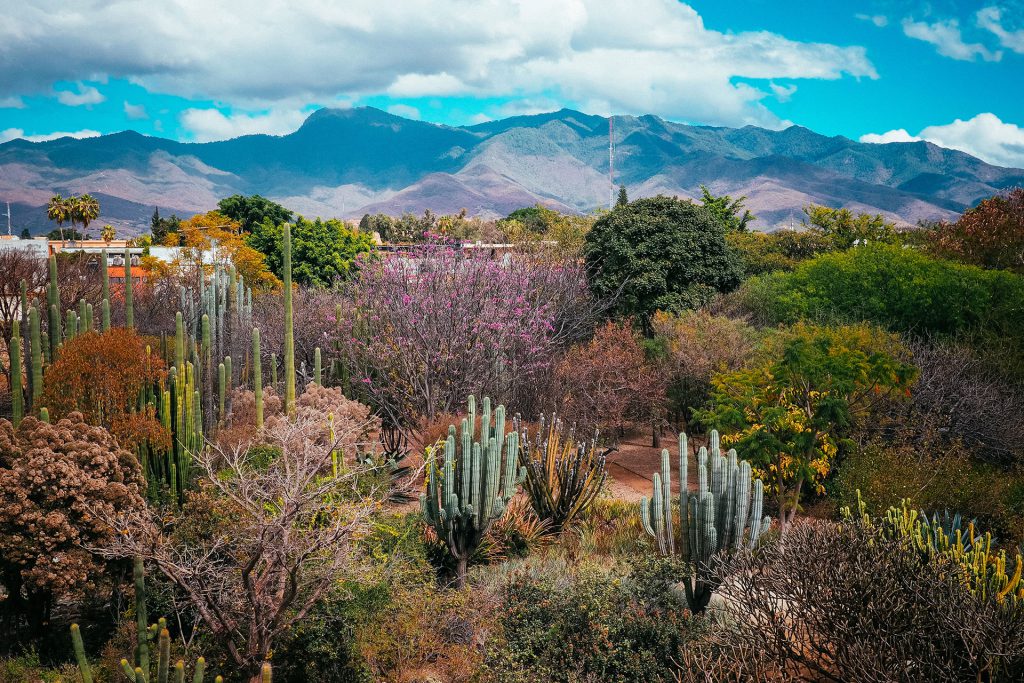
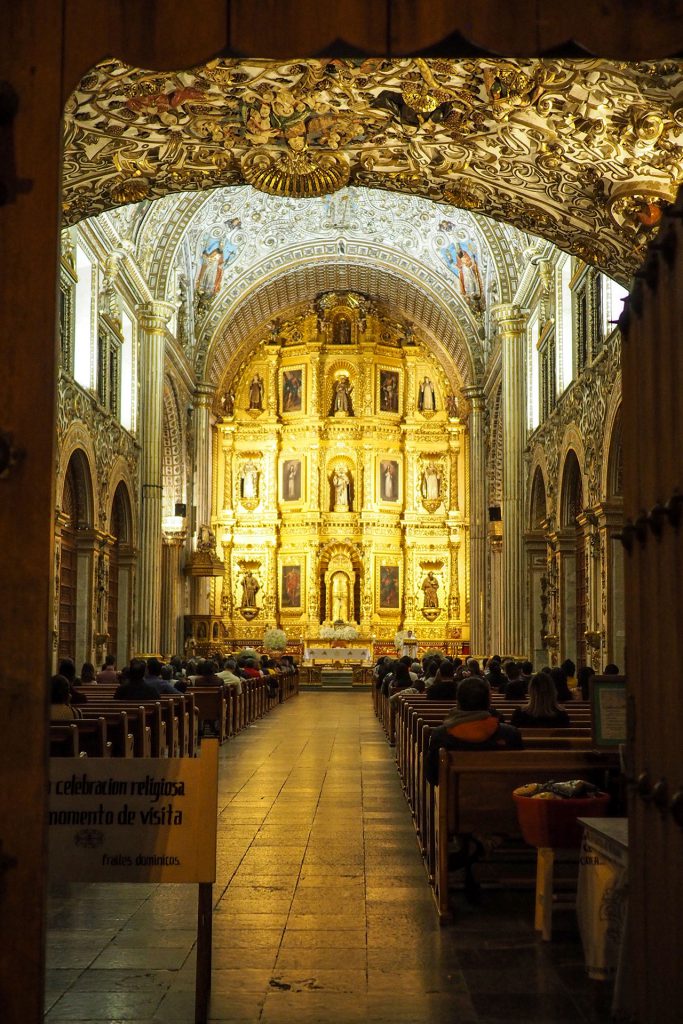
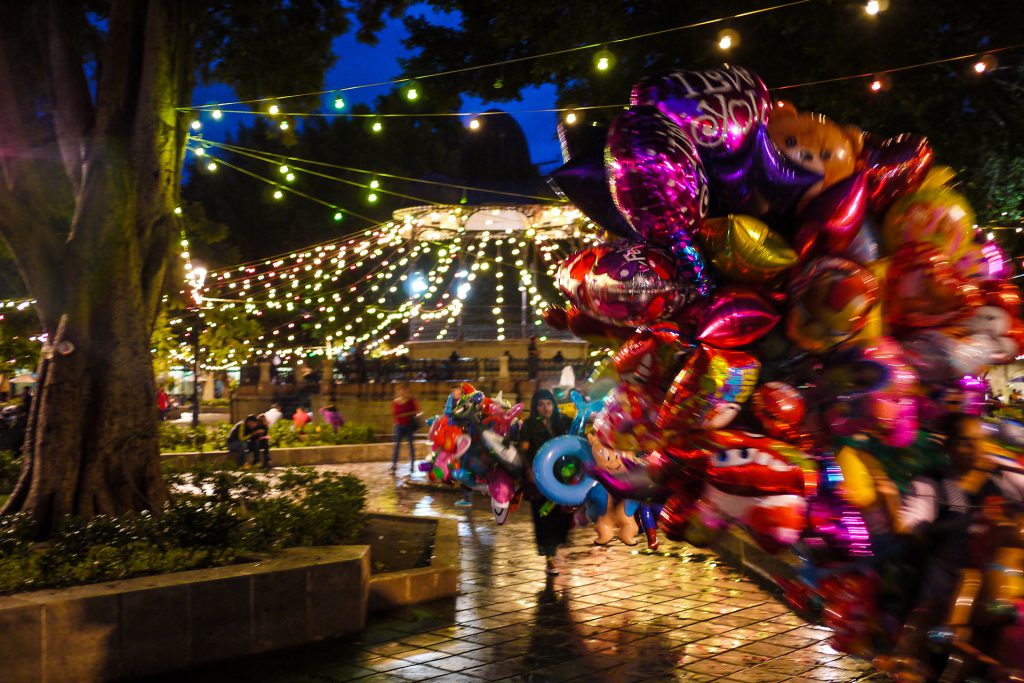
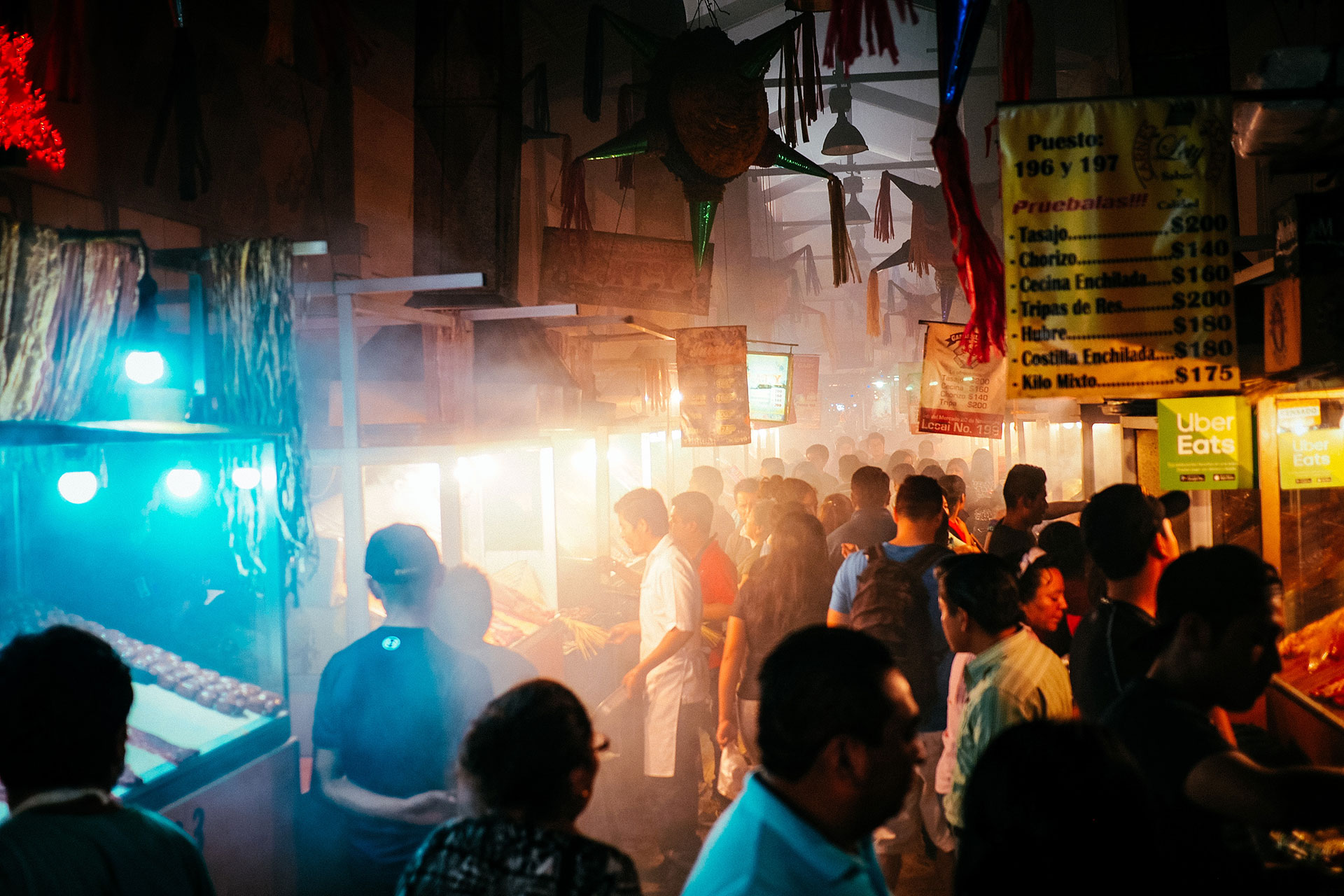
After three beautiful weeks in the wild south of Mexico we took the freeway across the plateau, this time through a soft mountain range of hills covered by light forests of candelabra cacti. We drove back across the central plain, waving once more at snow covered Popocatépetl, before finally, after 2.000 km on the road, entering the Valle de México, home of the former Aztec empire, now home of the 30 million capital, that vibrates with endless life and activity.
During these three weeks down south, we experienced the amazingly positive and lively spirit of the people – picturing Carolina’s 90years old grandmother dancing the night away at New Year. We also experienced how replenishing life can be living right by a beautiful ocean, with the constant sound of the waves and a pleasantly warm and humid climate. And we experienced a country bursting with variety – of people, cultures, and landscapes. But the most grateful I am for having spent forever-loved Camila’s last days with her, on a magical trip where she was with all the family one last time.
